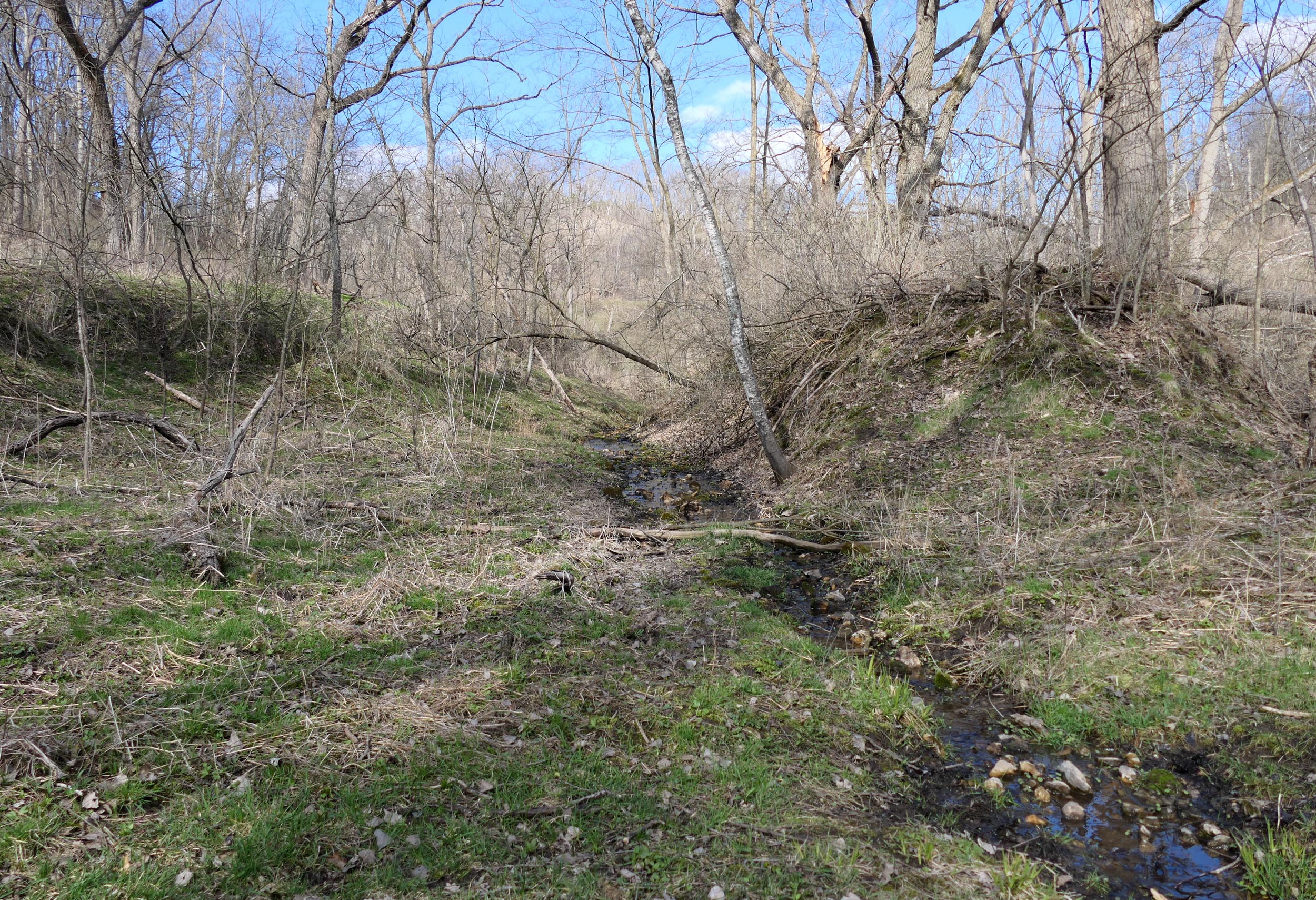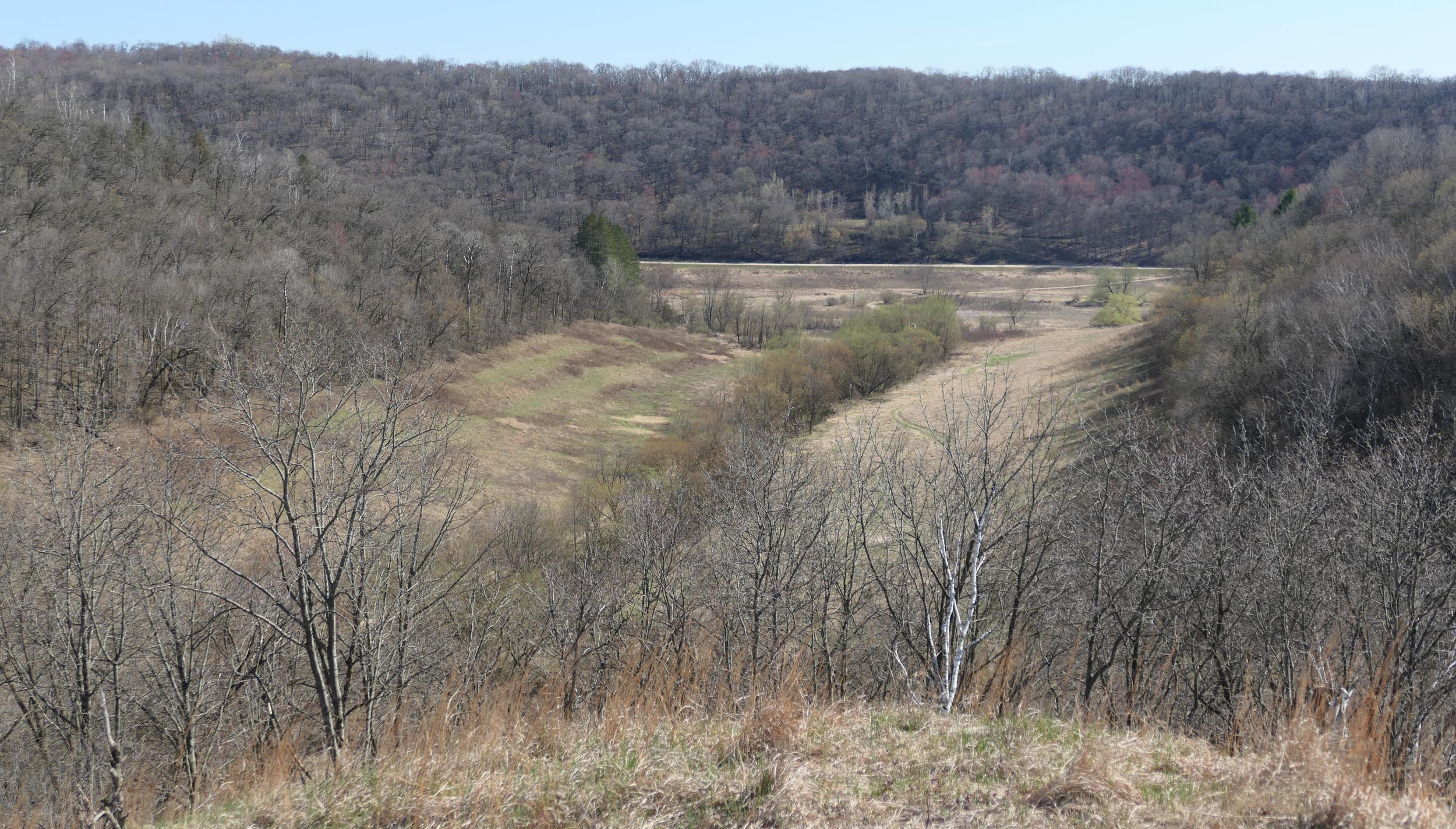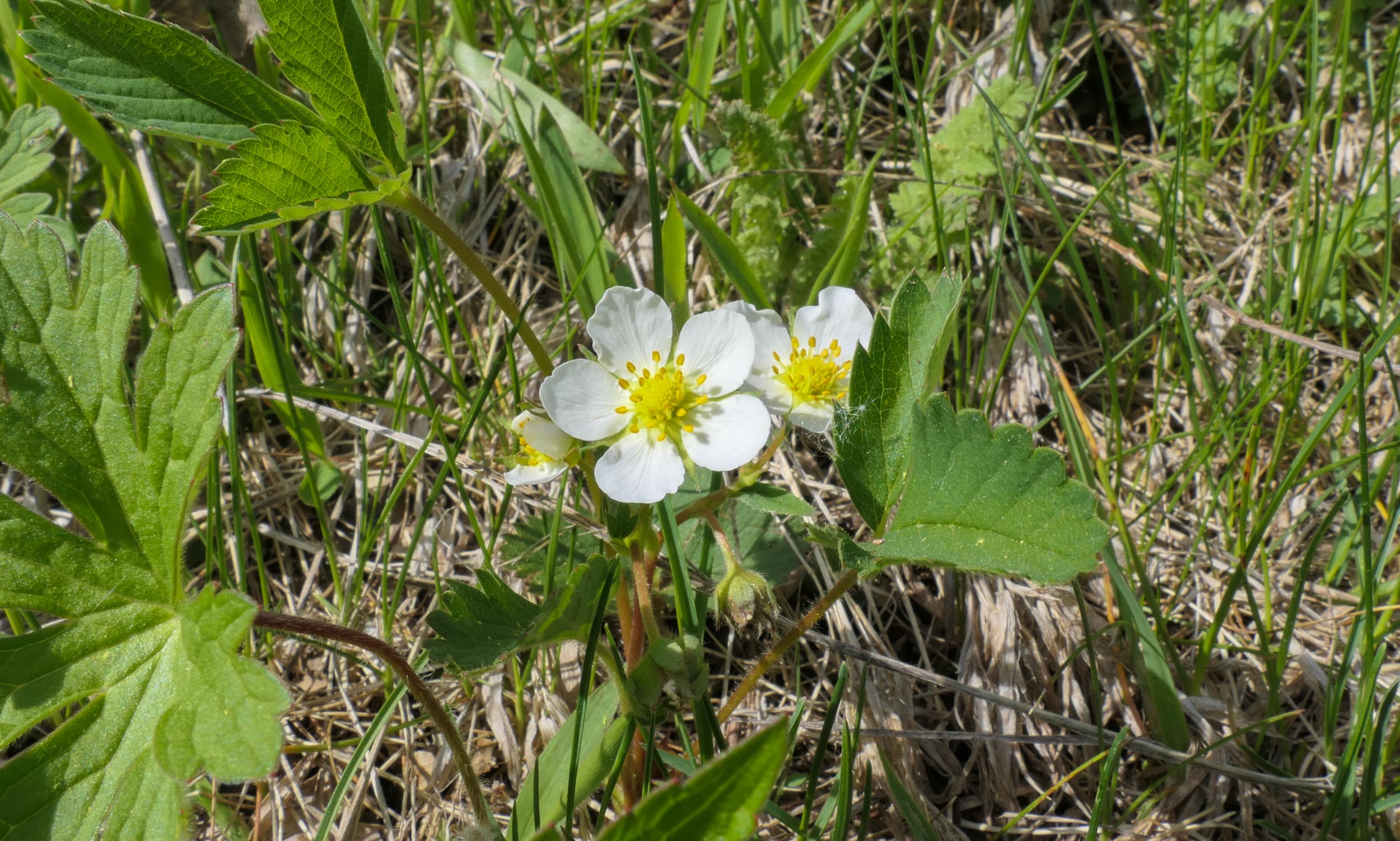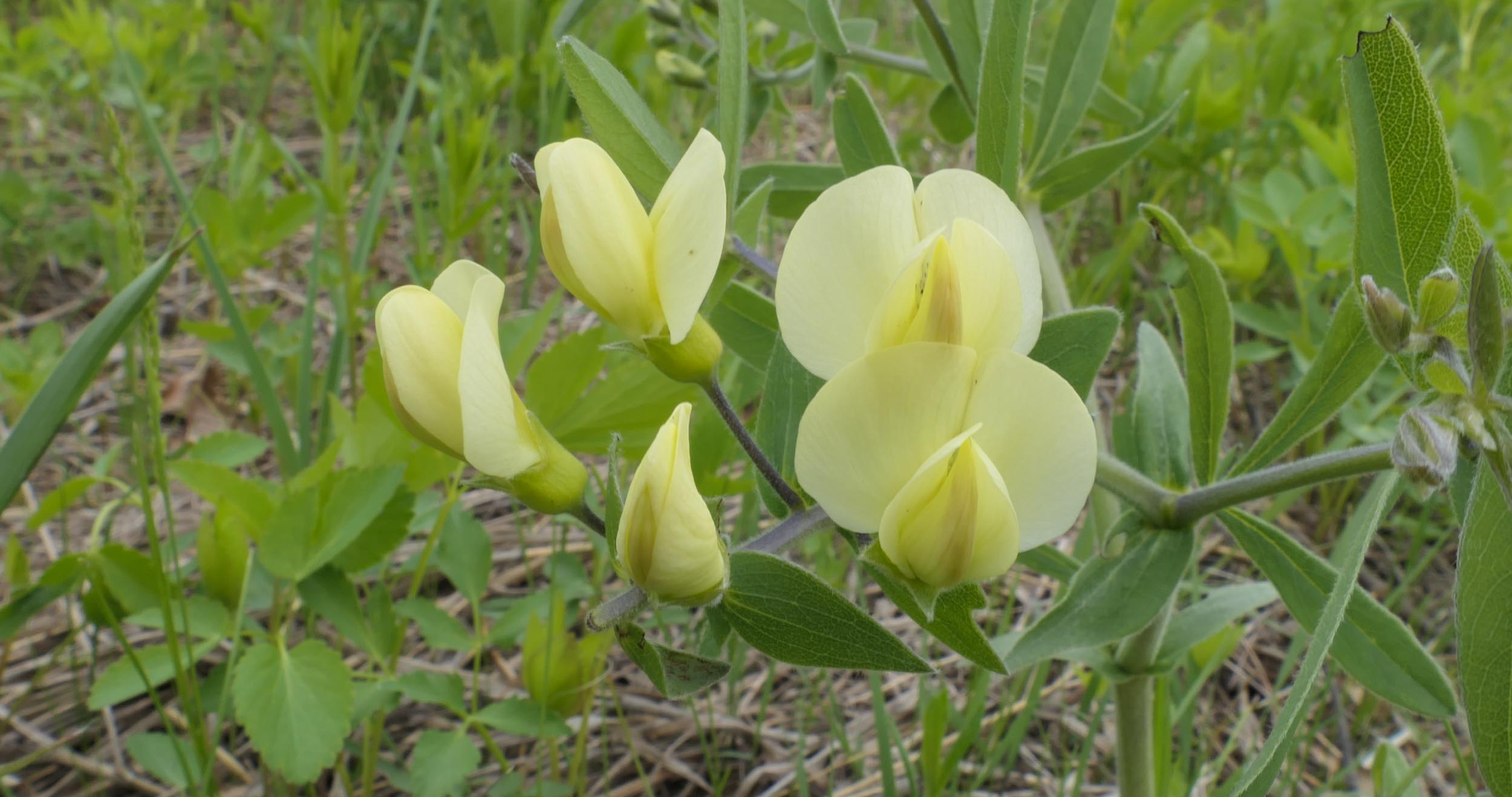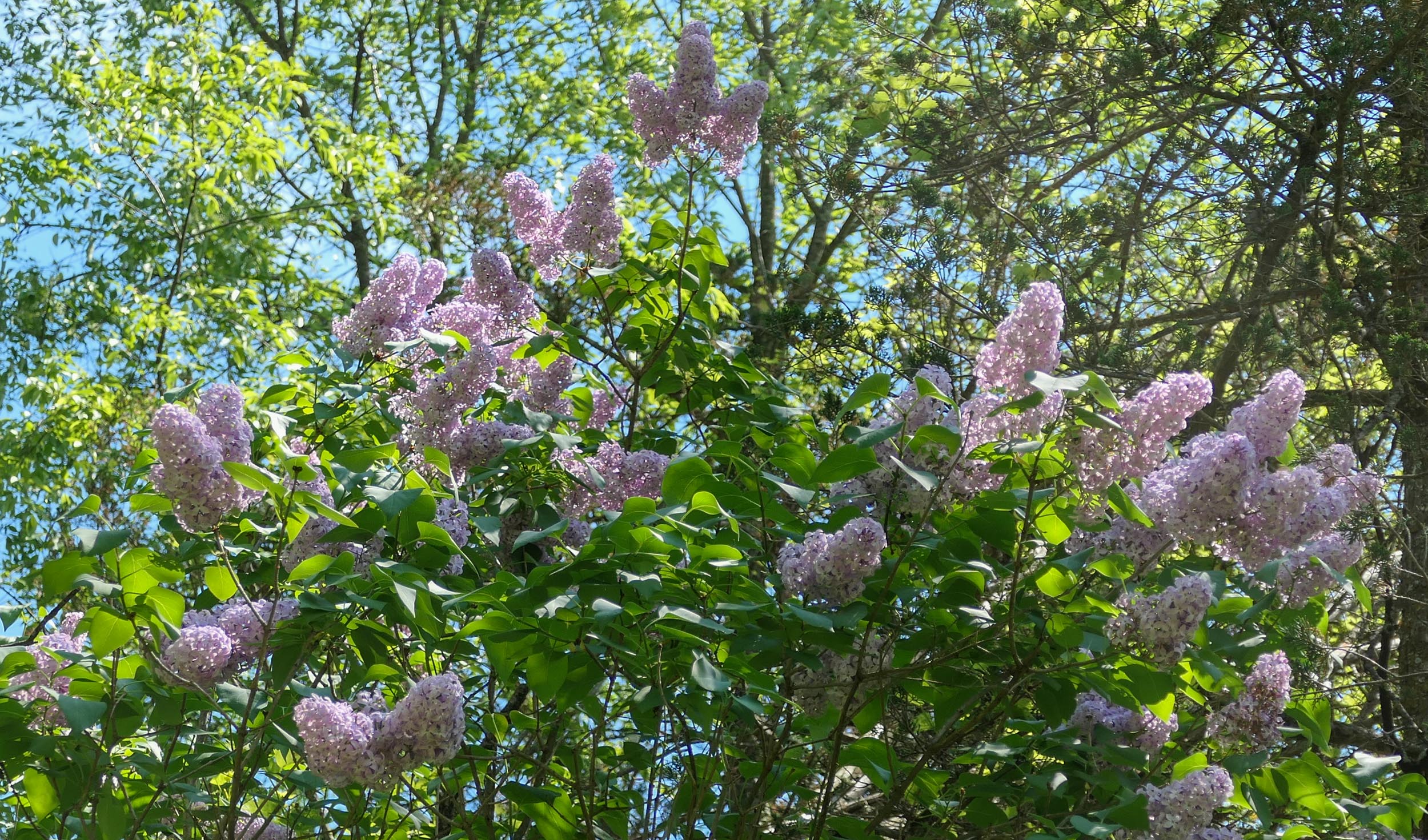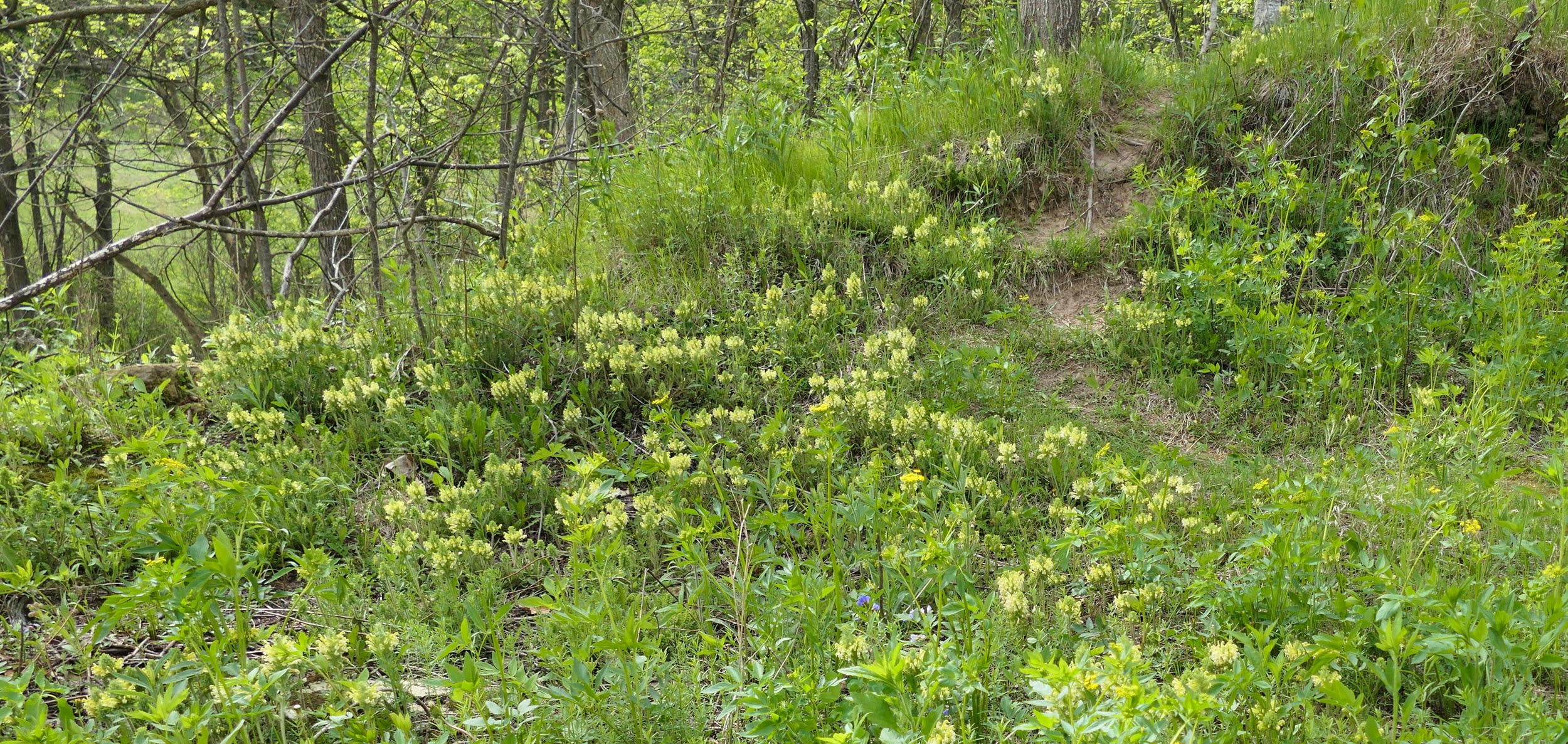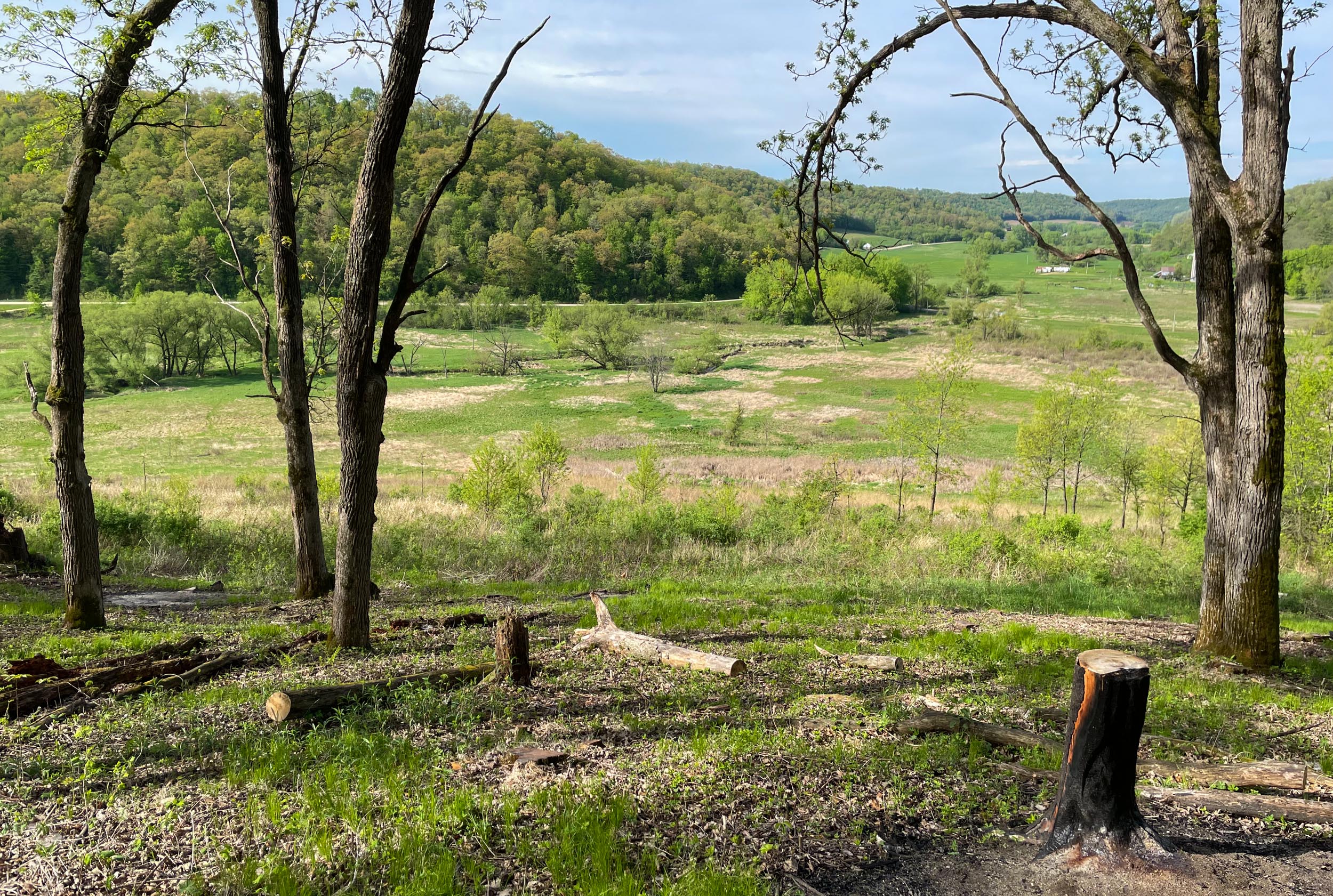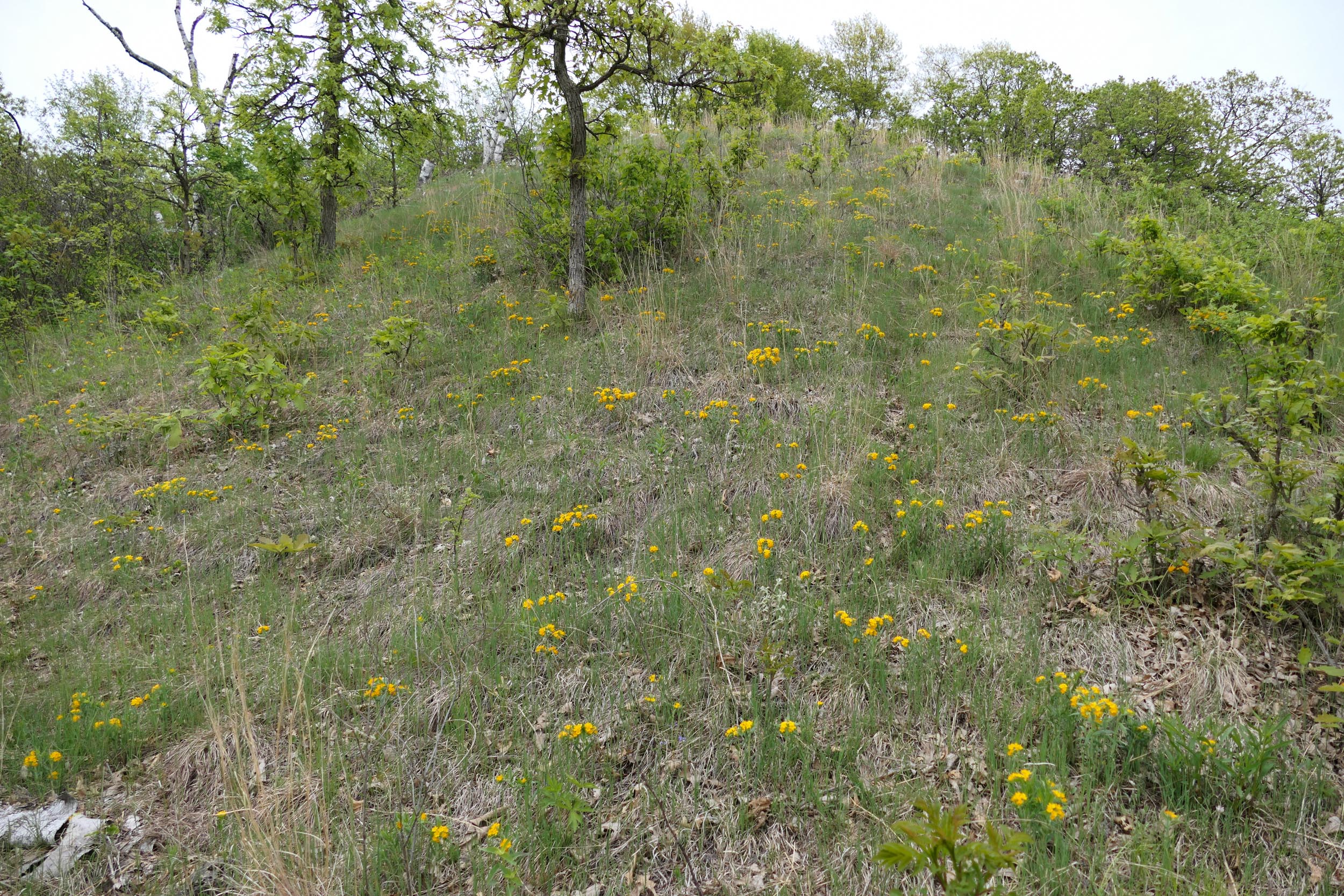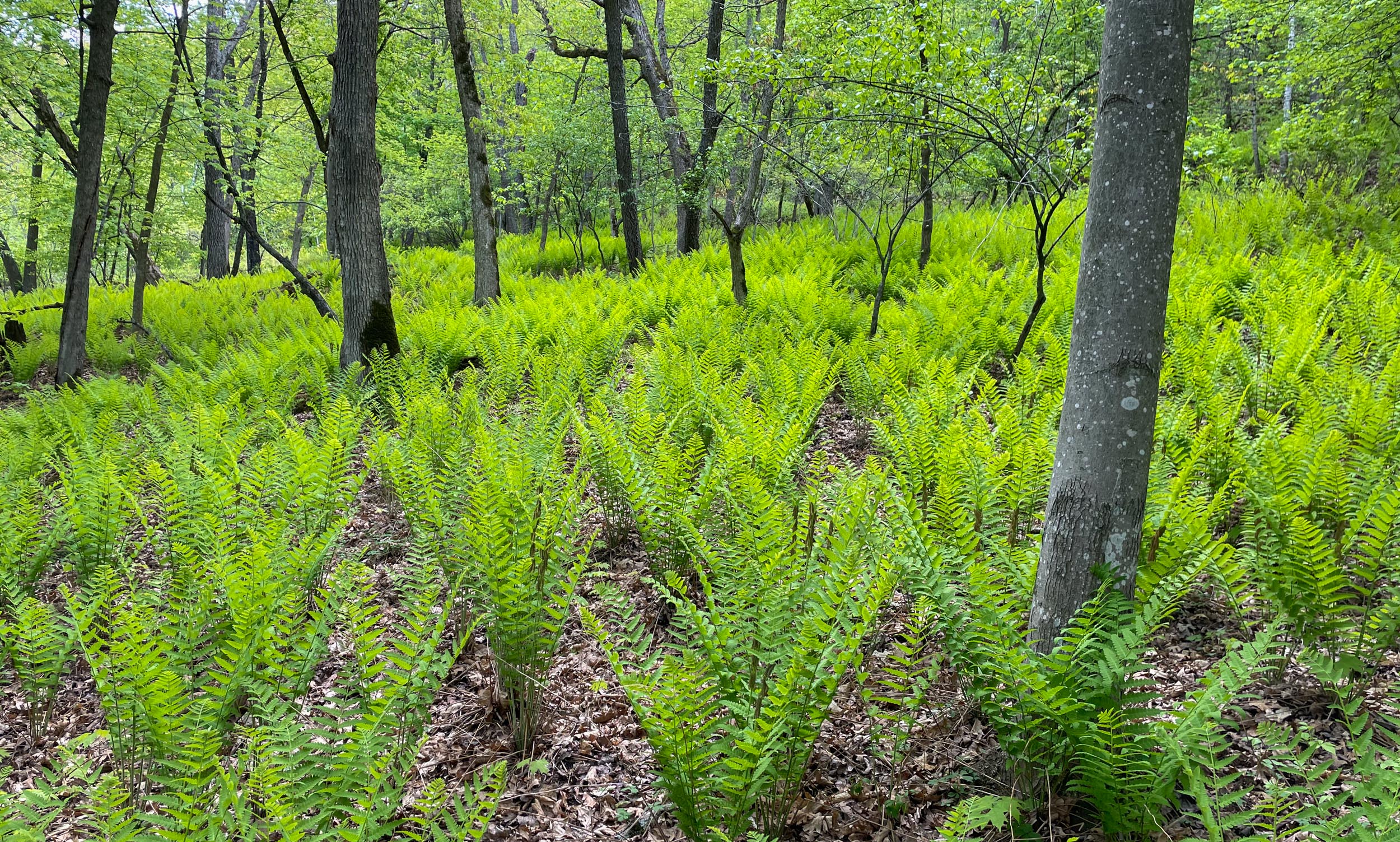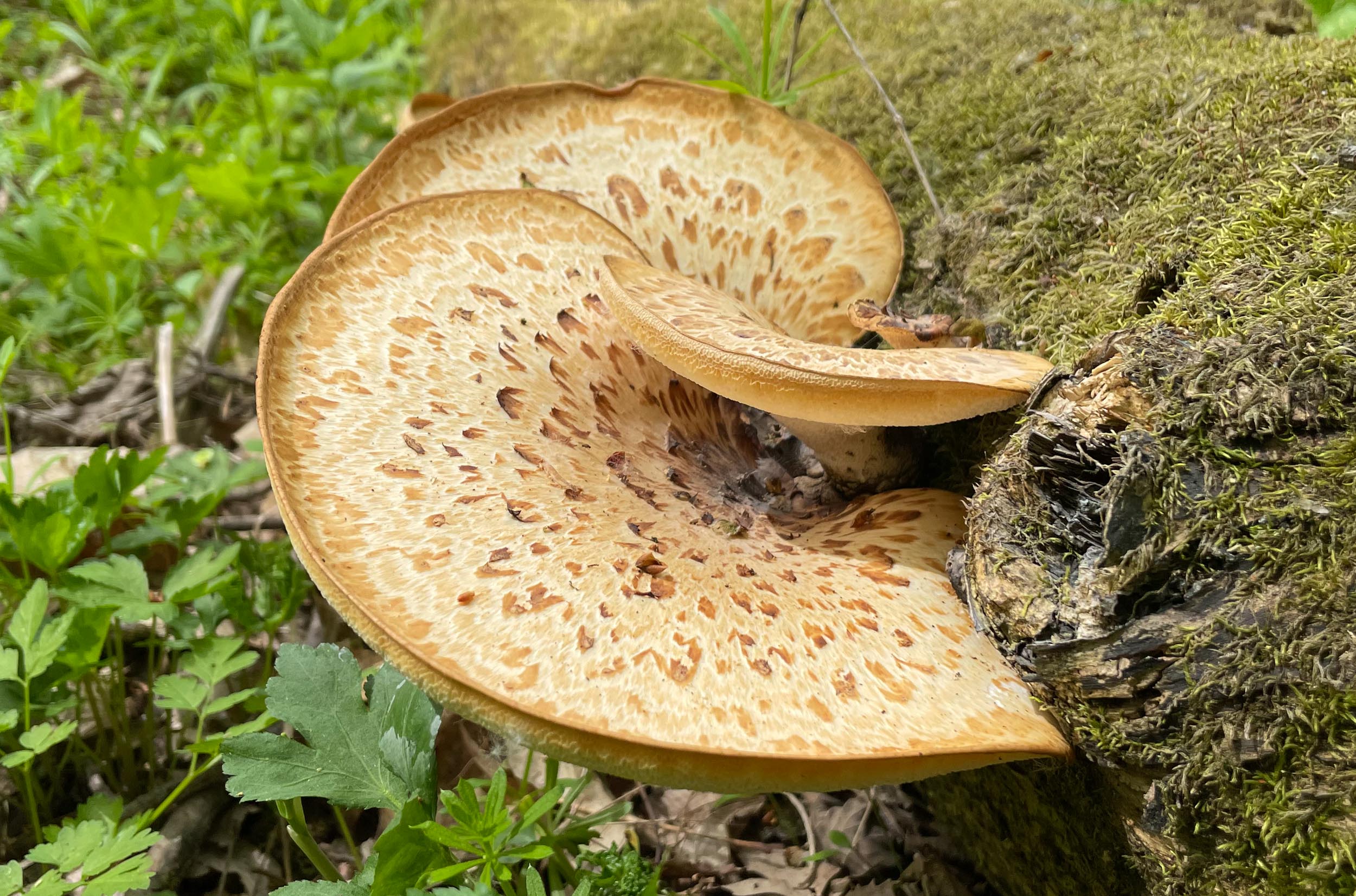This has been a spring of either cold or hot weather with not much in between, and mostly windy days.
Early in the month we had a week of temperatures in the 80s and 90s (F) and our landscapes suddenly went from brown with a little green, to brilliant green. This is the Glen – where we sit on our birding bench.
And Center Valley – the view from Indian Grass Point
Some of the earliest flowers to bloom were the willows. This is Pussy Willow with a Tricolored Bumblebee.
And here are more of my early favorites….
Bird’s Foot Violet
Wild Strawberries
Wild Plum
Showy Orchis
Marsh Marigolds
Flowers of Prairie Smoke on May 11
Prairie Smoke on May 31 – with flowers and seeds. The fuzzy seed heads give the plant its common name.
Hawthorn
Cream Wild Indigo
Apple trees aren’t native, but we have many of them scattered through the woods. The flowers are beautiful and fragrant in the spring.
Another non-native – lilacs growing near the old farmhouse site
Yellow Star Grass
Wood Betony
Wood Betony color variation
Hoary Puccoon
Hoary Puccoon and Blue-eyed Grass
Prairie Blue-eyed Grass
Wild Columbine
Jacob’s Ladder
Now that spring has come, we start being able to see what our fall and winter projects have accomplished – how they look now that the native plants are growing back. The plants recover gradually – over many years – so all these projects are at different stages of recovery.
Here’s Pine Point Savanna – the steep bluff that Erik and Beth from Kule Region Forestry worked to clear last winter.
Looking down the valley from the savanna.
There are lots of changes this year on Hidden Oaks Point. The lower part of the point was cleared of most of its big trees several years ago – Mike and I worked on it for a few years, and then Kule Region Forestry did the rest in January of 2017. The lower part of the point now looks like a savanna. Mike mowed it early this spring to control brush and brambles.
Here’s the same point, looking down from the top.
The prairie remnant on top is creeping down into the restored area. We’re seeing Hoary Puccoon, Blue-eyed Grass and other prairie species moving down into the lower parts of the slope.
One afternoon, while I was photographing that hillside, I watched a raccoon climb up into one of the big oak trees. A few minutes later we heard a loud raccoon dispute coming from the upper part of the tree.
This is the savanna on Indian Grass Point – with Hoary Puccoon. We’ve been gradually clearing this area for many years.
I spend a lot of time in the woods in the spring – working on controlling Garlic Mustard. It’s fun to see parts of the land that I don’t see very often. This is the Sugar Maple grove on Maple Ridge – with Interrupted Ferns.
This is the ravine that runs up Western Valley. It’s very deep and rocky, with moss and ferns and fallen trees.
Another part of the ravine.
Cool rainy weather has brought out the mushrooms. This is Dryad’s Saddle – it grows on dead elm trees. It can get very large – sometimes as big as a dinner plate.
These – I think – are Golden Oyster Mushrooms. They’re native to Asia, and are grown in the U.S. for food. They’ve now escaped cultivation – it will be interesting to see how much they’ll spread.
We’re starting to see a few new fawns.
We’re seeing more caterpillars and butterflies now – especially on the warmest days.
This is a Baltimore Checkerspot caterpillar. It spent the winter as a small caterpillar in a nest near the ground with many of its siblings. Now it’s climbed out of the nest and is feeding on the leaves of Swamp Betony.
Hundreds of Gorgone Checkerspot butterflies have emerged in the last week. They gather at wet spots on the driveway, on flowers, along trails, and here they’re congregating on some old coyote scat. They collect minerals from the scat to use in mating.
A colorful mix of flowers in a rocky area near the house: Golden Alexanders, Indian Paintbrush, and Prairie Phlox.
Lupine and Golden Alexanders in the Narrows Prairie


